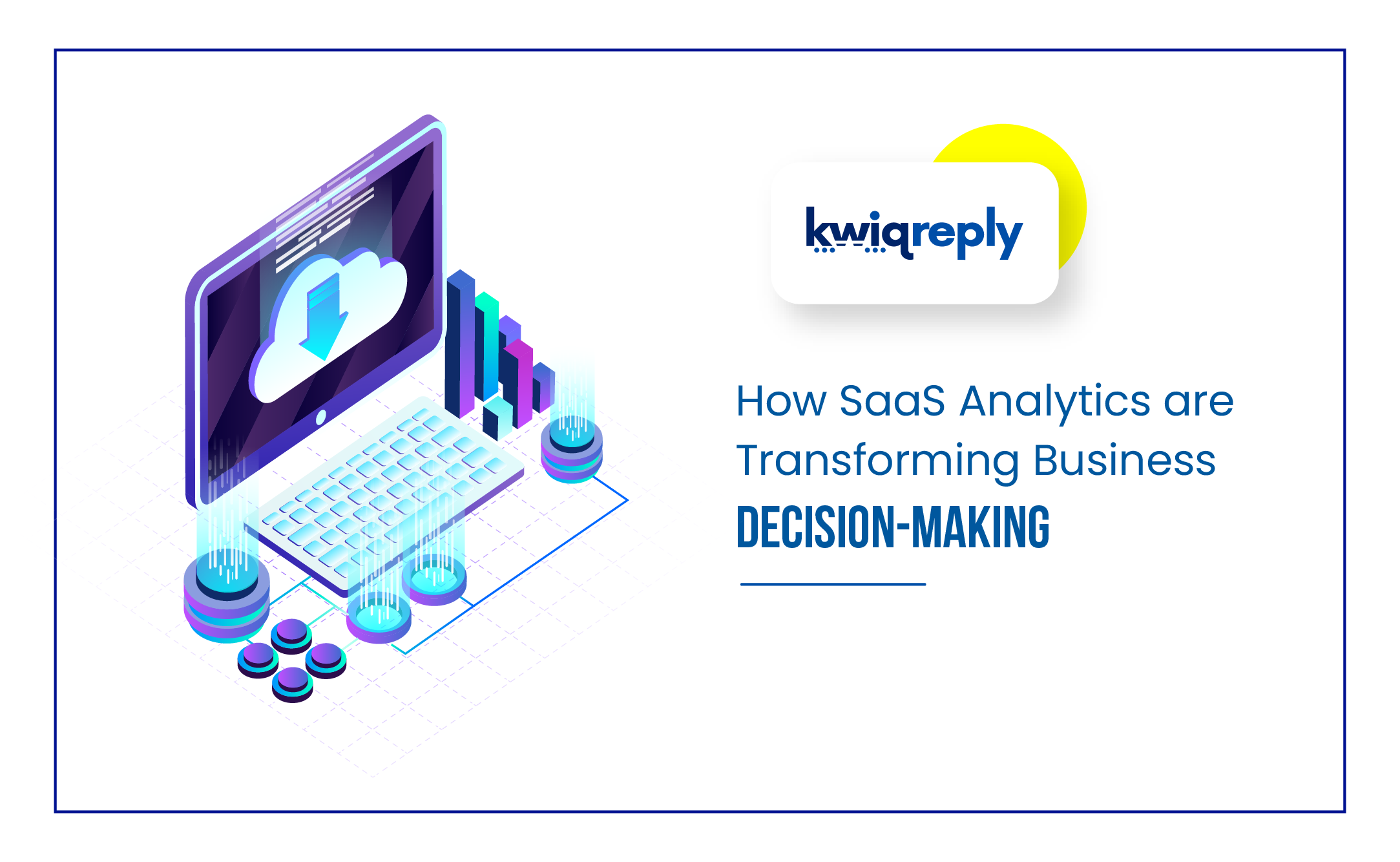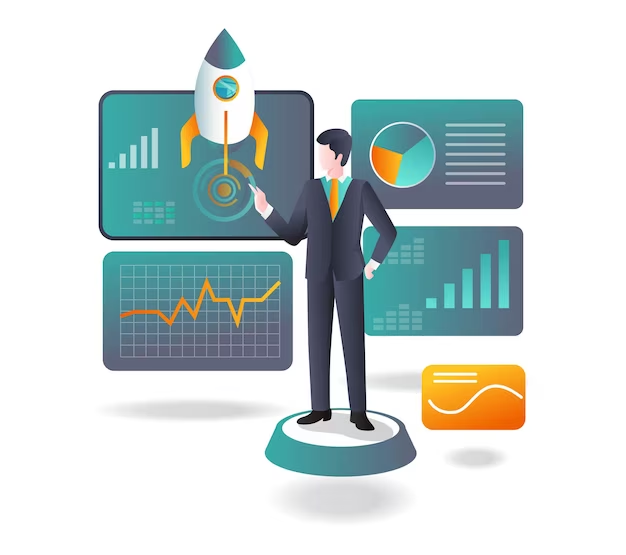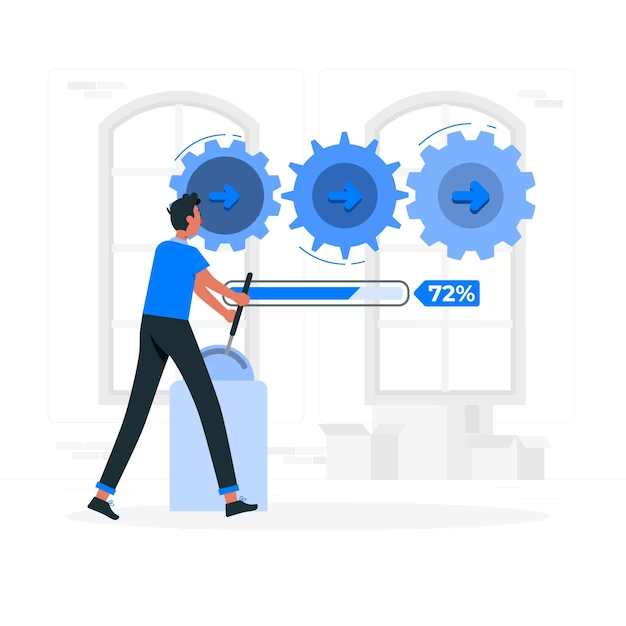
Data-Driven Insights: How SaaS Analytics are Transforming Business Decision-Making
In the digital era, data is gold and humans are a veritable goldmine of the same. Extracting this gold is relatively easy but how do we use it effectively? Organizations today have access to an unprecedented amount of data from several sources, including customer interactions, transactions, social media, etc. Harnessing this data has become a strategic imperative for businesses aiming to gain a competitive edge. This is where Software as a Service (SaaS) analytics steps in, helping companies make critical decisions and optimally utilize data.
TL;DR
- SaaS analytics refers to using cloud-based services to collect data-based insights on various relevant metrics
- These insights are gained using robust algorithms and machine learning, showing trends, potential inefficiencies, and causes
- This makes them more accessible letting laymen analyze them for making business decisions
- With these analytics, you can personalize the customer experience and tailor them to each customer's needs
- SaaS analytics also detect internal bottlenecks and areas for improvement
- They also show you market trends to let you strategize for the future
- Some benefits of using it are
- Enhanced decision accuracy
- Enables proactive decision-making
- Eliminates the need for investing in expensive hardware, software, and infrastructure
- Accommodate growth without requiring significant changes to the underlying infrastructure.
- Facilitates quick decision-making
- Encourages a data-driven culture within organizations with easy access
Sign up for the WhatsApp Business API and boost your business communication to new heights today!
The Rise of SaaS Analytics
SaaS analytics, a subset of cloud-based services, refers to utilizing analytics software hosted on the cloud for gaining valuable insights. This allows businesses to leverage advanced analytical tools without the burden of managing on-premises hardware and software. SaaS analytics' convenience, scalability, and cost-effectiveness have led to its rapid adoption across industries.
Traditionally, decision-making in businesses was often based on gut feelings, intuition, or limited historical data. This approach, though effective at times, needed more precision to navigate the complexities of modern markets. SaaS analytics has changed the game by providing real-time, data-driven insights that empower businesses to make informed decisions swiftly.
Unleashing Data-Driven Insights

The heart of SaaS analytics lies in its ability to turn raw data into actionable insights. With powerful algorithms and machine learning capabilities, businesses can process and analyze vast datasets to uncover patterns, trends, and correlations. These insights offer a comprehensive understanding of customer behavior, market trends, operational inefficiencies, etc.
One of the significant advantages of SaaS analytics is its accessibility. Gone are the days when only data scientists and analysts could decipher complex data sets. Modern SaaS analytics platforms offer user-friendly interfaces that enable decision-making at all levels. Proponents of the company can explore data, create visualizations, and derive insights without extensive technical expertise. This democratization of data has carried over to decision-making, fostering a culture of informed choices throughout organizations.
Personalizing Customer Experiences

In today's hyper-competitive market, understanding customer preferences and delivering personalized experiences is a significant advantage. SaaS analytics enables businesses to create customer profiles, segment audiences, and analyze buying patterns. This allows companies to tailor their marketing strategies, product offerings, and customer interactions to align with individual preferences.
For instance, e-commerce giants leverage SaaS analytics to recommend products based on a customer's browsing history and purchasing patterns. Similarly, streaming services use these insights to curate personalized content recommendations. This level of personalization enhances customer satisfaction while driving customer loyalty and repeat business.
Optimizing Operations and Efficiency

Beyond customer-centric applications, SaaS analytics can also drive operational excellence. By analyzing internal processes and workflows, businesses can identify bottlenecks, inefficiencies, and areas for improvement. Supply chain management, for instance, can benefit from predictive analytics that helps forecast demand, optimize inventory levels, and reduce costs.
Furthermore, preventive maintenance is another area revolutionized by SaaS analytics. By monitoring equipment sensors and analyzing performance data, businesses can predict when machinery is likely to fail. This proactive approach prevents costly downtime and ensures uninterrupted operations.
Navigating Market Trends

The business landscape is dynamic, with market trends and competitive forces constantly shifting. SaaS analytics equips companies with the tools to monitor and adapt to these changes effectively. By analyzing market trends, competitor activities, and consumer sentiments, businesses can strategize and position themselves ahead of the curve.
For example, a retail chain can use SaaS analytics to monitor trends and adjust its inventory and pricing strategies accordingly. Similarly, a financial institution can analyze global economic indicators to make informed investment decisions. These capabilities empower businesses to capitalize on emerging opportunities and mitigate risks.
The Importance of Using SaaS Analytics for Business Decisions
In today's data-driven era, the importance of informed decision-making cannot be overstated. Businesses operate in a rapidly changing landscape, where every choice made has the potential to shape success or failure. This is where SaaS analytics helps by empowering organizations to make strategic, well-informed decisions across various aspects of their operations.
What are The Benefits of Using SaaS Analytics for Business Decisions?
-
Enhanced Decision Accuracy
SaaS analytics provides a solid foundation of accurate, data-driven insights. This significantly enhances the accuracy of business decisions. By analyzing datasets and identifying patterns, organizations can make well-informed choices that have a higher probability of success.
-
Predictive Capabilities
One of the standout features of SaaS analytics is its predictive capabilities. Machine learning algorithms and analytics can forecast future trends, allowing businesses to anticipate market shifts and customer preferences. This foresight enables proactive decision-making and prepares businesses to adapt swiftly to changing circumstances.
-
Cost Efficiency
Adopting SaaS analytics eliminates the need for investing in expensive hardware, software, and infrastructure. The cloud-based nature of SaaS analytics reduces the upfront costs, making advanced analytics tools accessible to businesses of all sizes. This cost efficiency is especially valuable for startups and small businesses looking to compete on a larger scale.
-
Scalability
SaaS analytics platforms offer scalability, allowing businesses to adjust their usage based on their needs. This scalability also translates to convenience be it in analyzing a small dataset or handling large-scale data processing. SaaS analytics can accommodate growth without requiring significant changes to the underlying infrastructure.
-
Speed and Agility
SaaS analytics provides real-time insights that facilitate quick decision-making. Businesses can monitor performance, track trends, and respond to emerging opportunities or threats promptly, giving them a competitive edge.
-
Data-driven Culture
As mentioned before, SaaS analytics encourages a data-driven culture within organizations. When data is easily accessible at all levels, it empowers employees to base their decisions on evidence rather than assumptions. This culture shift fosters collaboration, innovation, and better outcomes across departments.
Here are Some Best Practices for Using SaaS Analytics for Business Decisions

-
Define Your Objectives
Before delving into SaaS analytics, businesses should clearly define their objectives. What specific business challenges are they trying to address? What insights are they seeking? Defining objectives ensures that the analytics efforts are focused and aligned with the organization's strategic goals.
-
Choose Appropriate Metrics
Selecting the right metrics to analyze is crucial. It's easy to get overwhelmed, so businesses should identify key performance indicators (KPIs) that directly correlate with their objectives. These metrics should provide meaningful insights that guide decision-making.
-
Maintain Data Quality
The quality of data used for analysis directly impacts the accuracy of insights. Garbage in, garbage out. By investing in data cleansing, validation, and normalization, businesses can ensure that the analyzed data is accurate, consistent, and reliable.
-
Collaborate for Effectiveness
Effective decision-making often requires input from multiple departments. Encouraging cross-functional collaboration ensures that insights from SaaS analytics are considered from various perspectives. This collaborative approach leads to well-rounded decisions that consider the broader implications.
Challenges and Considerations
While SaaS analytics holds immense promise, it's not without challenges. One of the primary concerns is data security and privacy. Storing sensitive business data on the cloud requires robust security measures to prevent unauthorized access or data breaches. Businesses must carefully evaluate the security features of their chosen SaaS analytics provider and ensure compliance with relevant regulations.
Moreover, the effectiveness of SaaS analytics relies on the data's quality and accuracy. Data cleansing and preparation are crucial steps to avoid drawing incorrect conclusions from flawed data. Businesses should invest in data quality management to maintain the integrity of their analytical insights.
The Road Ahead
As technology continues to evolve, the capabilities of SaaS analytics are expected to expand even further. The integration of artificial intelligence and machine learning will enhance predictive capabilities, allowing businesses to anticipate trends with greater accuracy. Real-time analytics will become more sophisticated, enabling instantaneous decision-making in fast-paced environments.
In conclusion, SaaS analytics is a game-changer in the realm of business decision-making. Its ability to transform data into actionable insights empowers businesses to make informed choices for growth, efficiency, and customer satisfaction. As more organizations recognize this, SaaS analytics will play a pivotal role in shaping the future of business across industries. Embracing this technology today will undoubtedly position businesses ahead of the competition tomorrow.
kwiqreply is a SaaS company aiming to help you fully leverage the features of WhatsApp’s Business API for your organization. So, seize the opportunity, leverage WhatsApp's potential, and propel your business toward sustainable growth and success!
Click here to book a free demo and let us show you how you can do more business with WhatsApp.
Read more blogs like this -